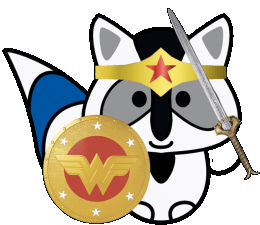
Originally published: 30/10/2023 09:25
Publication number: ELQ-80891-1
View all versions & Certificate
Publication number: ELQ-80891-1
View all versions & Certificate

Business Model Canvas
Value Proposition, Customer Segment, Relationship, Channels, Key partners, Activities, Resources, Cost Structure, Revenue Stream
Description
The Business Model Canvas is a strategic management tool used by entrepreneurs, startups, and established businesses to visualize, design, and iterate their business models. Developed by Alexander Osterwalder and Yves Pigneur, it provides a holistic view of how a business creates, delivers, and captures value. The canvas consists of nine key building blocks:
Customer Segments: This block defines the different groups of people or organizations that your business aims to serve. Identifying and understanding your target customers is crucial.
Value Proposition: Here, you outline the unique value your product or service offers to each customer segment. It should explain why customers would choose your solution over alternatives.
Channels: This block describes the various channels through which you reach and interact with your customers. It includes sales, marketing, and distribution channels.
Customer Relationships: Define the types of relationships you want to establish with your customers. This could be personal assistance, self-service, automated services, or community engagement.
Revenue Streams: Clearly state how your business intends to generate income from each customer segment. It could be through sales, subscription fees, licensing, etc.
Key Resources: List the critical assets, infrastructure, and resources your business needs to deliver its value proposition effectively. This includes physical, intellectual, human, and financial resources.
Key Activities: Specify the most important activities your business must perform to create and deliver value. This includes production, marketing, sales, and customer support.
Key Partnerships: Identify external partners, suppliers, or alliances that are essential to your business's success. Partnerships can help optimize resources and reduce risk.
Cost Structure: Describe the costs and expenses associated with operating your business. This could include fixed costs, variable costs, and economies of scale.
The Business Model Canvas is a strategic management tool used by entrepreneurs, startups, and established businesses to visualize, design, and iterate their business models. Developed by Alexander Osterwalder and Yves Pigneur, it provides a holistic view of how a business creates, delivers, and captures value. The canvas consists of nine key building blocks:
Customer Segments: This block defines the different groups of people or organizations that your business aims to serve. Identifying and understanding your target customers is crucial.
Value Proposition: Here, you outline the unique value your product or service offers to each customer segment. It should explain why customers would choose your solution over alternatives.
Channels: This block describes the various channels through which you reach and interact with your customers. It includes sales, marketing, and distribution channels.
Customer Relationships: Define the types of relationships you want to establish with your customers. This could be personal assistance, self-service, automated services, or community engagement.
Revenue Streams: Clearly state how your business intends to generate income from each customer segment. It could be through sales, subscription fees, licensing, etc.
Key Resources: List the critical assets, infrastructure, and resources your business needs to deliver its value proposition effectively. This includes physical, intellectual, human, and financial resources.
Key Activities: Specify the most important activities your business must perform to create and deliver value. This includes production, marketing, sales, and customer support.
Key Partnerships: Identify external partners, suppliers, or alliances that are essential to your business's success. Partnerships can help optimize resources and reduce risk.
Cost Structure: Describe the costs and expenses associated with operating your business. This could include fixed costs, variable costs, and economies of scale.
This Best Practice includes
25 slides




